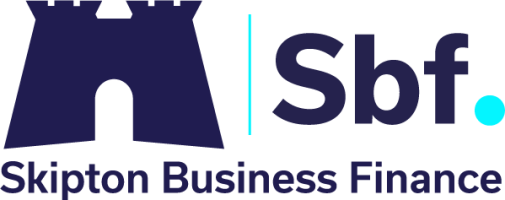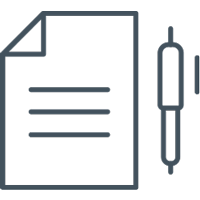When looking for financial options for your business, it can be overwhelming due to the amount of finance products and services available.
Two of the most common and popular forms of business finance used are Invoice Finance and Bank Overdrafts. Invoice Finance involves having access to unpaid invoices at a set advance less an agreed fee before your customers pay you. A bank overdraft is closer to a loan as you are given a set amount to use which you will later pay back.
Both of these options are popular for businesses because it allows them to pay outstanding payments such as suppliers or employee wages without having to wait to be paid by customers. There are many differences between these two financing options and it is important to know these differences, as the most suitable option may depend on your type of business.
Bank Overdraft
There are two types of bank overdrafts; authorised and unauthorised. Authorised is when an agreed amount is settled with the bank before using any money. An unauthorised overdraft is an unarranged overdraft and often occurs when a business spends more money than they have in their bank account. For the purpose of this article we are focusing on authorised bank overdrafts.
Bank overdrafts are very fast and simple to arrange, which is why a lot of businesses choose this option. On arrangement of an overdraft, it will usually involve agreeing a set amount with the bank. Most banks have a limit on how much you can have and this can differ depending on the bank you choose to use. Each bank will have its own criteria for lending, included business turnover and size, which may affect the amount you are able to receive. This might mean that you cannot borrow as higher amount as you might have originally hoped for. There is usually a set fee throughout the period of your overdraft. This might be daily, weekly or monthly depending on the provider you use.
Businesses are able to extend an overdraft, however this might result in paying some fees. If you wanted to apply for a larger overdraft, you might have to go through the application process again, which can be timely. With this option, you only borrow what you need at the time which can make it cheaper than a loan. Similarly, you usually only pay interest on what you do actually borrow. You may even end up paying off your overdraft early and in the case that this does happen, there will likely be no charge on doing so. One aspect that may put businesses off an overdraft is the fact that the bank can ask for the money back at any time.
Takeaways:
- Fast and simple to arrange
- Banks can have a strict lending criteria
- There will be set fees charged during the period of your overdraft
- Applying for a larger overdraft may result in re-applying
Invoice Finance
Invoice Finance is categorised into two main forms; Invoice Factoring and Invoice Discounting.Invoice Factoring is by far the most popular form of Invoice Finance available to UK businesses. It involves an arrangement with your funder, whereby the lender takes responsibility for running your credit control process. They pursue the debtor for payment so that you don’t have to. This type of invoice finance allows you to draw up to 100% of the value of an invoice, less an agreed fee, straight away so that you don’t have to wait 30, 60 or even 90+ days for your customers to pay.
Invoice Discounting is similar to Invoice Factoring in that you can access working capital as soon as you raise an invoice, however with discounting you are fully in charge of your own credit control.
An Invoice Finance facility can take longer to set up than a bank overdraft, often taking a week or more to be put in place. This, however, can be much quicker and varies depending on the provider. With an Invoice Finance facility, an initial agreed amount is set however this can be changed if the provider believes it to be suitable. Often the funding limit will grow in line with your business’s turnover. A facility can make financial planning a bit easier as agreements made are for a fixed period and are therefore not repayable on demand.
Compared with a bank overdraft, the amount you can get access to with Invoice Finance is larger. With this option you can borrow up to 100% of an invoice within 24 hours of it being sent and therefore receive your money quickly. This option is good for businesses that might not meet the traditional lending criteria of banks such as those with poor past credit control and smaller businesses with fewer assets. In most cases, the only asset required to secure funding is the invoice itself.
Takeaways:
- Initial agreed amount, but can be changed
- Larger amount can be accessed compared with a bank overdraft
- Ideal for companies who don’t meet traditional lending criteria
- Flexible as funding can grow in line with turnover
Skipton Business Finance offers Invoice Finance in the form of Invoice Factoring and Invoice Discounting.
As with all of our advice, we suggest that you have a research into all the options and providers available to make sure that you will be using the right option for your business. Most finance providers will be happy to offer advice on the best suited option for your business.
At Skipton Business Finance, we offer a range of Invoice Finance products. Visit here for more information on the services we provide. Alternatively, you can email us at info@skiptonbf.co.uk or call us at 0800 0854150.










